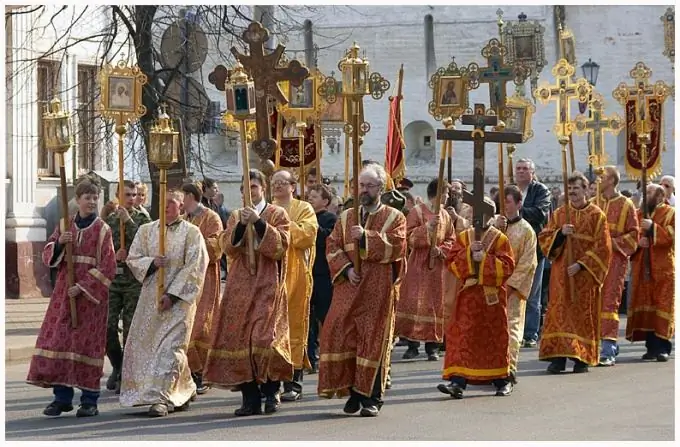- Author Antonio Harrison [email protected].
- Public 2023-12-16 07:44.
- Last modified 2025-01-22 21:44.
There are many traditions in Orthodox Christianity. One of these is the procession of the cross, performed on special solemn holidays.

The practice of religious processions has a very ancient history. Ever since the establishment of Christianity as the main religion of the Roman Empire (IV century), processions of the cross have become an integral part of church liturgical life.
Religious procession is a procession of believers with icons, portable crucifixes and banners through the streets of the settlement. Religious processions are a visible symbol of the testimony of the Orthodox faith before people. Such processions can be carried out not only along the streets of a city or village, but also just around the temple. At the same time, the clergy and the choir sing certain prayers, passages from the Holy Scriptures are read.
According to the divine service Charter of the Orthodox Church, processions of the cross are performed during patronal temple feasts. Also, the procession can be carried out on other memorable church dates. The performance of the procession can be determined by the rector of a particular church.
Religious processions can also take place on days when various shrines arrive in the city. For example, the miraculous icons of the Mother of God. In this case, the clergy and people can march with the miraculous icon from one temple in the city to another. Processions of the cross can also be performed on holy springs. When believers come to the holy spring, a prayer service for water is performed.
The main component of the procession is the prayer of believers. Each participant in such a procession should silently pray for their needs, as well as the needs of their neighbors. In addition, during religious processions, prayer is carried out for the entire population of the city or village.


